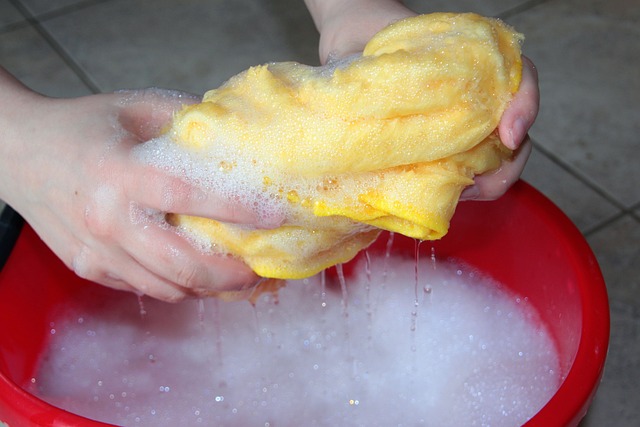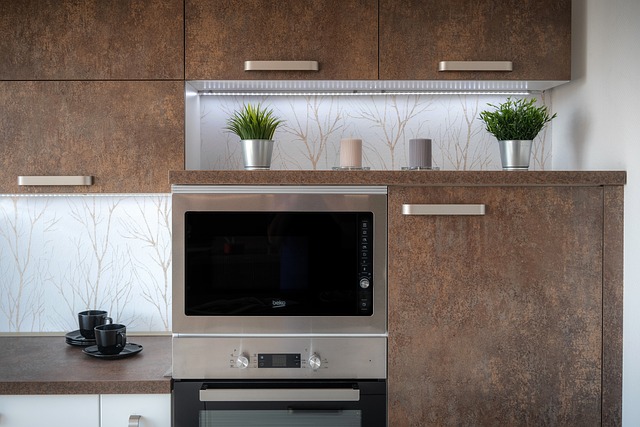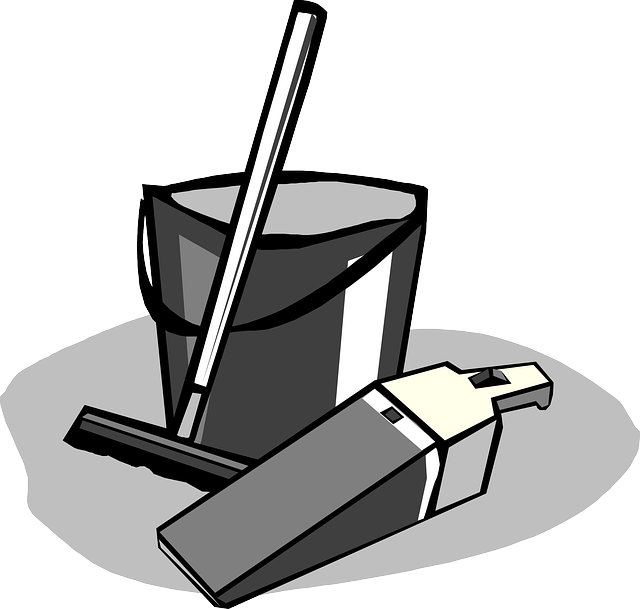Understanding different kitchen floor tile types (ceramic, porcelain, natural stone) is key to effective cleaning. Ceramic and porcelain are non-porous and easy to maintain with simple mopping and mild detergent. Natural stone requires specialized care due to porosity, needing regular sealing and pH-neutral cleaners. Using quality tools like a vacuum cleaner designed for hard floors and microfiber mop ensures deep cleaning without scratches. A regular cleaning routine involves daily sweeping/vacuuming, weekly mopping, and targeted stain removal with suitable kitchen floor cleaners or natural remedies like baking soda. Deep cleaning sessions remove tough stains and buildup while preserving aesthetics and promoting a healthier cooking environment.
Keeping your kitchen floor tiles sparkling is essential for a hygienic and aesthetically pleasing space. This comprehensive guide offers insights into effective kitchen floor cleaning techniques, catering to various tile types. We equip you with the right tools and provide step-by-step processes for daily maintenance and deep cleaning. Learn how to tackle stains, grout buildup, and long-term care, ensuring your kitchen floor remains a focal point of cleanliness and charm. Discover expert tips for optimal kitchen floor cleaning.
Understanding Your Kitchen Floor Tile Types

Knowing your kitchen floor tile types is essential for effective cleaning. Different tiles, like ceramic, porcelain, or natural stone, have distinct characteristics that influence how they should be cleaned. Ceramic and porcelain tiles, common in many kitchens, are generally non-porous, making them easy to maintain. A simple mopping with a mild detergent usually does the trick. However, natural stone tiles, such as granite or marble, require more specialized care due to their porous nature. These need regular sealing and pH-neutral cleaners to prevent staining and etching.
Understanding these variations ensures you employ the right techniques for each type. For instance, stone floors might demand a deeper clean with a vacuum or broom to remove embedded dirt before applying a suitable cleaner. This tailored approach not only maintains the aesthetic appeal but also prolongs the life of your kitchen floor tiles, keeping them looking their best despite regular use and exposure to various substances.
The Right Tools for Effective Cleaning

When it comes to cleaning kitchen floor tiles, having the right tools makes all the difference for effective results. Start with a good quality vacuum cleaner designed for hard floors; this will help remove embedded dirt and debris from the grout lines and surface. For more stubborn stains, invest in a floor cleaning brush attachment that can reach tight spaces and agitate the grime.
Additionally, consider using a mop specifically designed for tile floors. Microfiber mops are highly effective at picking up moisture and capturing dirt without leaving scratches. Pair this with a gentle, pH-neutral cleaner suitable for kitchen floors, and you’ll achieve a deep clean that leaves your tiles looking as good as new.
Step-by-Step Guide to Daily Maintenance

Keeping your kitchen floor tiles clean doesn’t have to be a daunting task. Start by sweeping or vacuuming daily to remove loose dirt and debris. This prevents particles from settling into the grout lines, making future cleaning easier. Next, use a mop with warm water and a mild detergent suitable for tile floors. Avoid overly wet mops as they can damage your tiles; always wring out excess water. Scrub each section thoroughly, focusing on corners and edges where grime tends to gather. Rinse well with clean water afterwards. For stubborn stains, apply a specialized kitchen floor cleaner directly to the affected area, let it sit for a few minutes, then scrub gently before rinsing. Regular maintenance will ensure your kitchen floor tiles stay sparkling clean between deep cleans.
Deep Cleaning Strategies for Stained or Discolored Tiles

When it comes to deep cleaning kitchen floor tiles, stains and discolouration can be persistent issues that require more than a regular sweep or mop. For truly stained or discoloured tiles, a comprehensive cleaning strategy is needed. Start by vacuuming or sweeping to remove any loose dirt or debris, ensuring you get into the grout lines for a thorough clean. Next, mix a solution of warm water and a mild detergent designed for kitchen surfaces. Apply this solution to the tiles using a sponge or soft cloth, working from one end of the room to the other to prevent spreading dirt across clean areas.
For stubborn stains, consider using a tile-specific cleaning agent or even baking soda paste, which can be left on the affected area for several minutes before being scrubbed gently with a brush or scouring pad. Rinse thoroughly with warm water, then use a dry microfiber cloth to wipe down the tiles, leaving them sparkling clean and ready for a fresh, stain-free kitchen floor.
Tips for Removing Tougher Stains and Grout Buildup

When it comes to kitchen floor tile cleaning, tougher stains and grout buildup can be a real challenge. To tackle these stubborn issues, start by using a good quality tile cleaner designed for kitchens. Apply the cleaner directly onto the affected area, allowing it to sit for a few minutes to loosen the grime. Then, use a stiff-bristled brush or sponge to scrub vigorously, focusing on the stained or built-up areas.
For particularly tough cases, try using a mixture of baking soda and water. Sprinkle the paste onto the stain, let it sit for around 15-20 minutes, then scrub thoroughly with a damp cloth or sponge. This natural cleaning method is effective yet gentle on your tiles and grout. Rinse well with warm water afterward to ensure no residue remains, and enjoy a sparkling clean kitchen floor!
Maintaining a Sparkling Kitchen Floor Long-Term

Maintaining a sparkling kitchen floor is an ongoing process, but with the right techniques, it can stay pristine for years. Regular cleaning plays a pivotal role in preserving the longevity of your kitchen tiles. Start by sweeping or vacuuming daily to remove loose dirt and debris, preventing them from settling into the grout lines. This simple step significantly reduces the effort required for deeper cleaning later.
Invest in a good quality floor cleaner suitable for ceramic or porcelain tiles. Use it to mop your kitchen floor weekly, ensuring you follow the manufacturer’s instructions for dilution and application. For tough stains, employ natural cleaning solutions like baking soda or vinegar, which are gentle yet effective. Regular deep cleaning sessions will not only keep your floor looking new but also prevent the buildup of grime and bacteria, making it a healthier space for food preparation.
